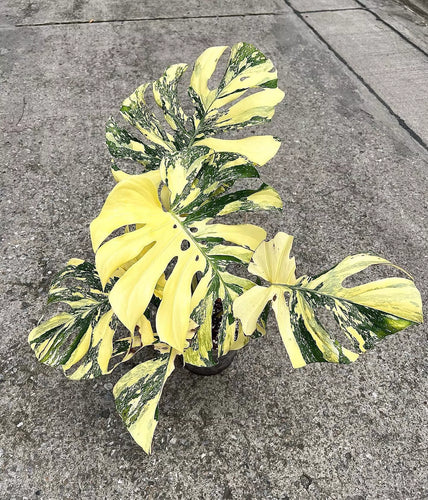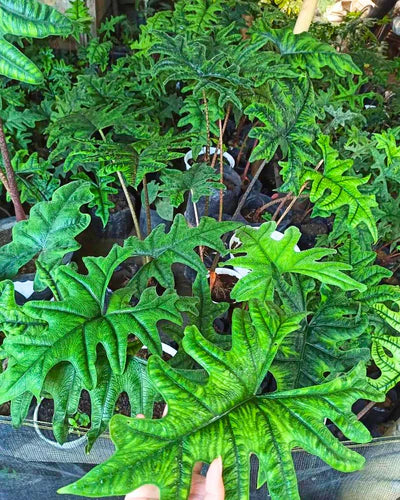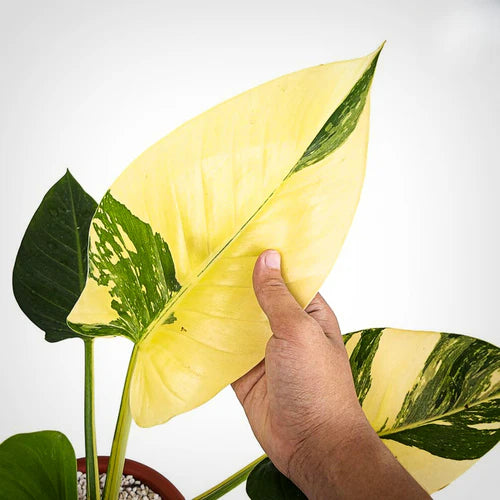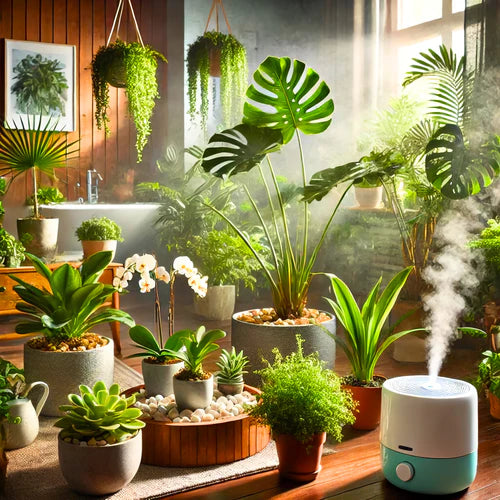Are Syngonium Albo Rare?
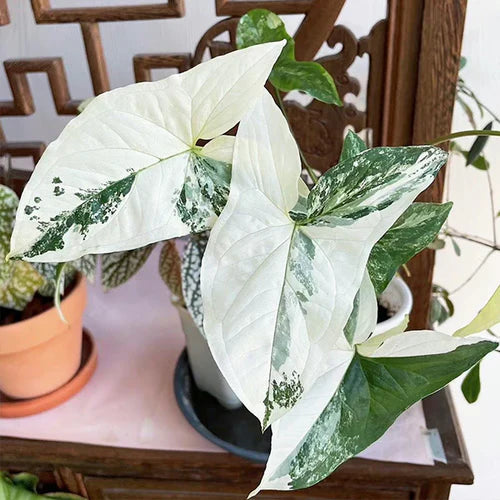
Are Syngonium Albo Rare?
Table of Contents
- Introduction
- What is Syngonium Albo?
- Syngonium Albo: A Rare Beauty
- Care Instructions for Syngonium Albo
- Light Requirements
- Watering Needs
- Soil Preferences
- Temperature and Humidity
- Fertilization
- Pruning and Maintenance
- Propagation Tips
- Common Problems and Solutions
- Pest Control
- Disease Management
- Addressing Care Mistakes
- Conclusion
Introduction
Syngonium Albo, also known as Syngonium Podophyllum Albo Variegatum or variegated arrowhead vine, is a stunning plant that has captured the hearts of plant enthusiasts worldwide. But what makes this plant so special? And more importantly, are Syngonium Albo rare? This article will delve into the unique characteristics of Syngonium Albo, its rarity, and provide comprehensive care tips to help you nurture this beautiful plant.
What is Syngonium Albo?
Syngonium Albo is a variegated variety of the Syngonium Podophyllum species, known for its striking bright white and green leaves. This plant belongs to the Araceae family and is native to tropical regions of Central and South America. The arrowhead-shaped leaves with their unique variegation make Syngonium Albo a sought-after plant for indoor gardening enthusiasts.
Syngonium Albo: A Rare Beauty
Are Syngonium Albo rare? The answer is yes, Syngonium Albo is considered rare due to its unique variegation and the growing demand among plant collectors. The variegation in Syngonium Albo is a result of genetic mutations, making each plant unique and highly desirable. The rarity is further enhanced by the plant's availability in big box stores such as Home Depot or Lowe’s. This still makes the demand high as supply is lower, making it a ‘collector plant’.
Detailed Care Instructions for Syngonium Albo
Caring for Syngonium Albo involves understanding its specific needs to ensure it thrives. Here, we will break down each aspect of care in detail to help you create the perfect environment for this rare and beautiful plant.
Light Requirements
Syngonium Albo requires bright, indirect light to maintain its stunning variegation. Direct sunlight can cause leaf burn and fade the white variegation, leading to less striking foliage. An ideal spot would be near a north or east-facing window where the plant can receive ample light without being directly exposed to the sun.
- Tip: If natural light is insufficient, consider using a grow light to supplement. LED grow lights can provide the necessary spectrum of light without producing excess heat.
- Light Rotation: Rotate your plant regularly to ensure even light exposure on all sides. This prevents lopsided growth and ensures all leaves receive adequate light.
- Seasonal Adjustments: As the intensity and duration of natural light change with seasons, adjust the plant's position. Move it closer to the light source in winter and further away in summer to avoid direct sunburn.
Watering Needs
Watering Syngonium Albo correctly is crucial. These plants prefer consistently moist soil but are sensitive to overwatering, which can lead to root rot.
- Watering Schedule: Water when the top inch of soil feels dry. In the growing season (spring and summer), this might mean watering once a week, while in the dormant season (fall and winter), watering can be reduced.
- Water Quality: Use room temperature, filtered water to avoid the chlorine and fluoride often present in tap water, which can cause leaf tips to brown.
Watering Techniques
Fine-tuning your watering techniques can make a significant difference in the health of your Syngonium Albo.
- Bottom Watering: Instead of watering from the top, place the pot in a tray of water and allow the soil to absorb moisture from the bottom. This method encourages deeper root growth and prevents overwatering the top layers of soil.
- Humidity Trays: Create a humidity tray by placing pebbles in a shallow tray filled with water and setting the pot on top. This increases humidity around the plant as the water evaporates.
Soil Preferences
Syngonium Albo thrives in a well-draining soil mix that retains some moisture but doesn't stay soggy. A blend of peat moss, perlite, and orchid bark provides the ideal conditions.
- Soil Mix Recipe:
- 40% peat moss or coco coir
- 30% perlite
- 30% orchid bark
This mix ensures good drainage while retaining the necessary moisture.
Temperature and Humidity
As a tropical plant, Syngonium Albo prefers warm temperatures and high humidity.
- Temperature: Maintain a temperature range of 60-85°F (15-29°C). Avoid placing the plant near drafts, air conditioners, or heaters.
- Humidity: Aim for 60-80% humidity. In dry climates, increase humidity by using a humidifier, placing a tray of water with pebbles near the plant, or grouping it with other plants.
Fertilization
Regular feeding helps Syngonium Albo maintain its vibrant growth and variegation.
- Fertilizer Type: Use a balanced, water-soluble fertilizer (like a 10-10-10 or 20-20-20 formula) diluted to half strength.
- Feeding Schedule: Fertilize once a month during the growing season (spring and summer). Reduce feeding in fall and winter when the plant's growth naturally slows down.
Pruning and Maintenance
Pruning not only helps maintain the plant's shape but also encourages healthier, bushier growth.
- Pruning Tips:
- Remove any yellow or damaged leaves to promote overall plant health.
- Trim leggy stems to encourage a fuller appearance.
- Always use clean, sharp scissors or pruning shears to prevent disease spread.
Propagation Tips
Propagating Syngonium Albo is relatively straightforward and can be done through stem cuttings.
- Propagation Steps:
- Choose a healthy stem with at least one node (a small bump where roots and leaves grow from).
- Cut the stem below the node using clean scissors.
- Place the cutting in water or directly into a moist, well-draining soil mix.
- Keep the cutting in a warm, humid environment and wait for roots to develop (typically within a few weeks).
- Once roots are established, transplant the cutting into a pot with appropriate soil.
Common Problems and Solutions
Even with the best care, Syngonium Albo can encounter problems. Here are some common issues and how to address them:
Pest Control
Syngonium Albo can be susceptible to pests such as spider mites, aphids, and mealybugs. Regular inspection and prompt treatment are essential.
- Common Pests:
- Spider Mites: Tiny red or brown insects that create fine webs on the plant.
- Aphids: Small, green or black insects found on new growth.
- Mealybugs: White, cottony insects that cluster on stems and leaves.
- Treatment:
- Isolate the affected plant to prevent the spread of pests.
- Wipe down leaves with a mixture of water and mild soap or neem oil.
- Use insecticidal soap or horticultural oil for severe infestations.
Disease Management
Overwatering and poor air circulation can lead to diseases such as root rot and fungal infections.
- Root Rot: Caused by prolonged waterlogged soil. Symptoms include yellowing leaves, wilting, and a foul smell from the soil.
- Solution: Remove the plant from its pot, trim away affected roots, and repot in fresh, well-draining soil. Adjust watering practices to prevent recurrence.
- Fungal Infections: Appear as spots on leaves or stems.
- Solution: Remove and discard affected plant parts. Improve air circulation and avoid overhead watering. Use a fungicide if necessary.
Addressing Care Mistakes
- Yellowing Leaves: Often due to overwatering or insufficient light.
- Solution: Adjust your watering schedule and ensure the plant receives bright, indirect light.
- Fading Variegation: Low light conditions can cause the white variegation to fade.
- Solution: Move the plant to a brighter location, but avoid direct sunlight.
- Brown Leaf Tips: Can be caused by low humidity or chemical buildup from tap water.
- Solution: Increase humidity around the plant and use filtered water.
Conclusion
Syngonium Albo is indeed a rare and beautiful plant that can add a pop of variegation and color to any indoor garden. With the right care, you can enjoy the stunning variegated foliage and watch your plant thrive. Remember to provide it with the appropriate light, water, soil, and humidity, and address any common problems promptly to keep your Syngonium Albo healthy and vibrant.
For more detailed care instructions and to purchase Syngonium Albo, check out these resources: How to Grow and Care for Syngonium Albo Variegata and Syngonium Albo.
If you're curious about the rarity of other variegated houseplants, this article offers a great read.


